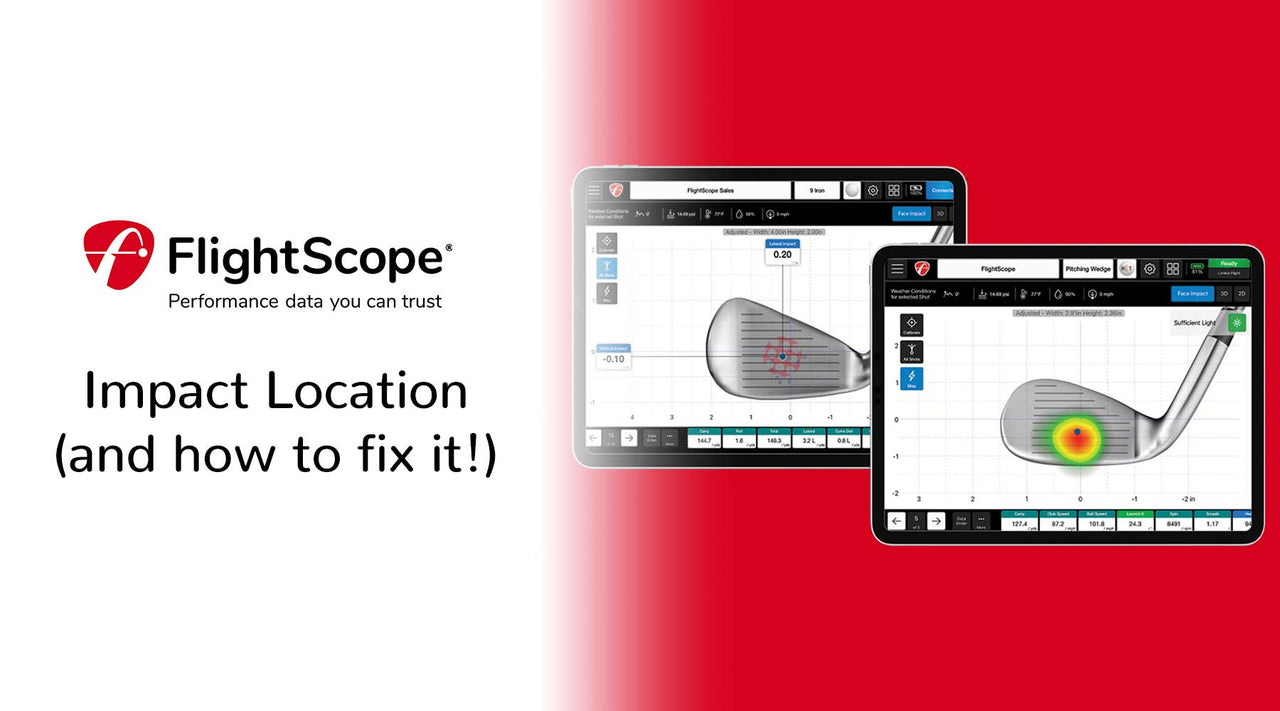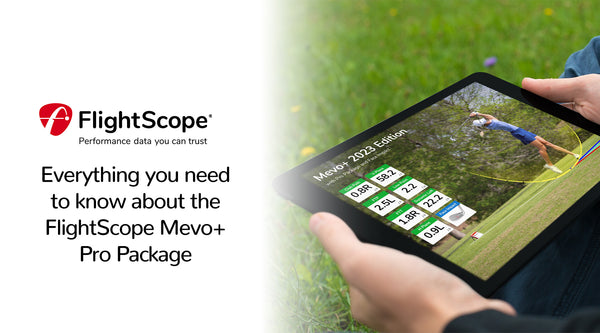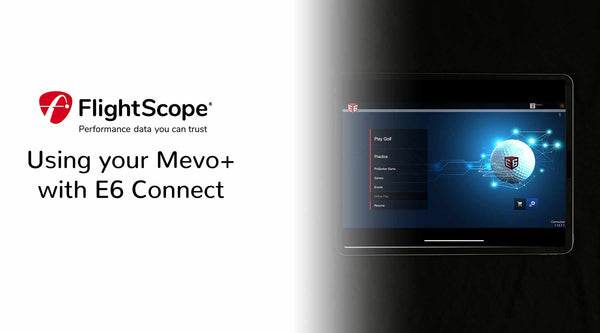We all love the feeling of hitting the ball in the middle of the club face. There is nothing sweeter in golf than flushing a ball and watching it fly straight at the flag.

But most people find that feeling a bit elusive. One key to my teaching is helping my students hit the middle of the face more often. In order to do that you must first know where you are hitting on the face. And now there is a great tool that can reveal where you are hitting on the face and really fine-tune the impact location to maximize distance and control. The tool I use to help my students is the FlightScope Mevo+ with the Pro Package add-on. The reason that I use it is because it provides the data I need to make sure I am helping my students shoot lower scores, hit the ball more solidly and enjoy the game more. Specifically, FlightScope has just introduced an add-on option called "Face Impact Location for customers that have a Mevo+ and the Pro Package add-on. This is an awesome upgrade that shows you exactly where you hit on the face. This is a game- changer for dialing in flush contact.
Understanding that impact can be a little challenging, so I am going to break down what influence missing the sweet spot has on the shot and I am also going to provide you with some time-tested “fixes” for the days when you are not hitting it dead solid.
I try to look at the swing in simple terms and I do the same with impact. So to me, if you miss the sweet-spot there are only a couple options where you can hit. Here they are:
Toe:

Heel

Thin (low on face)

Fat (high on face)

The part that some people miss is that not all misses are created equal and the effects of a sweet spot miss can be wildly different. It is just very difficult to see the exact point where the ball struck the face. This is why I trust the Mevo+ with the Pro Package and Face Impact Location add-ons.
Gear Effect
This is a big and confusing term, but it is really quite simple. The club face creates a
gearing effect when it strikes the ball. Like two gears in a machine, they oppose each other. For example, let’s say you catch a drive off the toe. If you were to see it in super slow motion, you would notice that the face opens rapidly through impact. It would be easy to assume that because the face opens, the ball would slice way off line. But due to gear effect, that face opening actually makes the ball “gear” the opposite direction. The result...you guessed it, a big hook! The opposite is true for a ball hit on the heel. This creates a rapid closing of the club face, which you would think would hook the ball, but it actually creates a gearing effect that fades or even slices the ball.

Vertical Gear Effect
As if that is not enough to worry about, there is an additional gearing that takes place when you strike that ball above or below the sweet spot. If you hit the ball below the sweet spot, the club face delofts rapidly. This makes the ball launch lower and actually increases the spin imparted on the ball. The delofting face gears even more spin on to the ball. I bet you have hit this one when you are heading into a strong wind and the ball launches low but spins up into the air and goes nowhere!
And the opposite is true for the ball hit above the sweet spot. In this case the face lays back adding loft which launches the ball a bit high but the face laying back actually gears less spin on to the ball. This is the miss you want with the driver because it can still go a pretty long way.
Actually if you look at the impact marks on a PGA Tour pro’s driver it is usually not
directly on the sweet spot of the club, it is slightly high and slightly toward the toe. They call this the “Hot Spot” instead of the sweet spot because it helps to optimize their overall driver results. But don’t get me wrong, there is nothing wrong with settling for hitting the ball in the sweet spot!
How to fix off-center hits
I love teaching with the proper feedback because my students improve so much faster. I used to have to use impact tape or face spray to see exactly where my students where striking the face, but now I can just use my Mevo+ with Pro Package and Face Impact Location and it shows the exact impact location.
Now that you understand the effects of off-center contact, how do we fix it? Let me give you some tips on dialing the impact so you can hit right on the sweet spot.
I like to think of it as an “If-then” statement...if I hit on the heel, then I need to do X. So let go through the different scenarios and I will give you a fix for each.
If you hit on the toe, then first make sure you are close enough to the ball at address, then add some merry-go-round to your swing. This will get the club more around you at the top and will allow you to swing more in front of you coming down allowing you to hit the middle of the face. It will feel like a little fatter swing, think Ben Hogan. If you hit on the heel, then first make sure that you are far enough from the ball and then add some ferris wheel to your swing. This will prevent the club from getting too flat and behind you and make it easier to deliver the sweet spot to the ball. The swing will feel a little more upright, think Jack Nicklaus.
If you hit fat/high on the face, then first make sure it is not teed too high (driver, fairway, hybrid) then make sure you are using your legs. When you extend your legs as you swing into the ball you release more power and it prevents hitting fat/high on the face shots. Think Justin Thomas.
If you are hitting thin/low-on-the-face, first make sure you don’t have the driver teed
too low (driver, fairway, hybrid), then make sure you are extending your arms all the way down to the ball. By extending your arms you will release more power, facilitate the squaring of the club and eliminate hitting thin/low-on-the-face shots. Think Rickie Fowler.
The Bottom Line
Understanding your impact location and ensuring gear effect will help you understand your game. Everyone gets off track with their game occasionally, and by having some simple, easy to execute swing fixes, you can get right back on track. It is just a process of figuring out your personal formula for success and then trusting the formula. Owning a FlightScope and understanding the fundamentals of performance data will be a great help in practicing with purpose.




